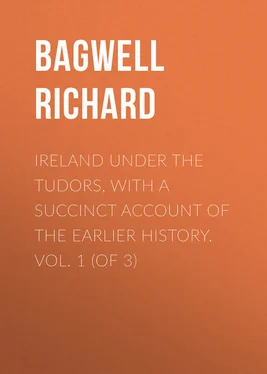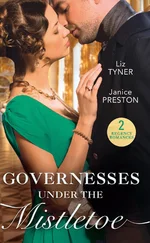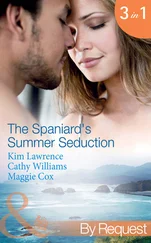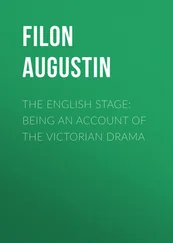Richard Bagwell - Ireland under the Tudors, with a Succinct Account of the Earlier History. Vol. 1 (of 3)
Здесь есть возможность читать онлайн «Richard Bagwell - Ireland under the Tudors, with a Succinct Account of the Earlier History. Vol. 1 (of 3)» — ознакомительный отрывок электронной книги совершенно бесплатно, а после прочтения отрывка купить полную версию. В некоторых случаях можно слушать аудио, скачать через торрент в формате fb2 и присутствует краткое содержание. Жанр: foreign_antique, foreign_prose, Историческая проза, на английском языке. Описание произведения, (предисловие) а так же отзывы посетителей доступны на портале библиотеки ЛибКат.
- Название:Ireland under the Tudors, with a Succinct Account of the Earlier History. Vol. 1 (of 3)
- Автор:
- Жанр:
- Год:неизвестен
- ISBN:нет данных
- Рейтинг книги:4 / 5. Голосов: 1
-
Избранное:Добавить в избранное
- Отзывы:
-
Ваша оценка:
- 80
- 1
- 2
- 3
- 4
- 5
Ireland under the Tudors, with a Succinct Account of the Earlier History. Vol. 1 (of 3): краткое содержание, описание и аннотация
Предлагаем к чтению аннотацию, описание, краткое содержание или предисловие (зависит от того, что написал сам автор книги «Ireland under the Tudors, with a Succinct Account of the Earlier History. Vol. 1 (of 3)»). Если вы не нашли необходимую информацию о книге — напишите в комментариях, мы постараемся отыскать её.
Ireland under the Tudors, with a Succinct Account of the Earlier History. Vol. 1 (of 3) — читать онлайн ознакомительный отрывок
Ниже представлен текст книги, разбитый по страницам. Система сохранения места последней прочитанной страницы, позволяет с удобством читать онлайн бесплатно книгу «Ireland under the Tudors, with a Succinct Account of the Earlier History. Vol. 1 (of 3)», без необходимости каждый раз заново искать на чём Вы остановились. Поставьте закладку, и сможете в любой момент перейти на страницу, на которой закончили чтение.
Интервал:
Закладка:
CHAPTER V.
FROM THE INVASION OF THE BRUCES TO THE YEAR 1346
The Irish invited Bruce, but they made no regular or general effort in his favour. Their total incapacity for anything like national organisation had forbidden the idea of a native sovereign, and perhaps the majority of them thought one Norman baron no better than another. The year 1316, in which Bruce landed, witnessed the almost total destruction of the O’Connors, the tribe which had last held the chief kingship. Their relationship with the De Burgos, Berminghams, and other Anglo-Normans may be traced in great detail in the annalists. Felim O’Connor, whom the Connaught historiographers call undisputed heir presumptive to the sovereignty of Erin, formed one of those great confederacies which occur so frequently in Irish history, and which so seldom had any results. The O’Kellys, MacDermods, O’Maddens, O’Dowds, O’Haras, O’Kearneys, O’Farrells, MacMahons, and many others were represented; and the Anglo-Normans, who also mustered in great force, were commanded by the Red Earl’s brother, Sir William de Burgo, and by Richard Bermingham, fourth baron of Athenry, at the gate of which town the decisive struggle took place. The Irish were defeated with the loss of something like 10,000 men. Felim O’Connor fell, and his tribe never recovered its position in Connaught. In late times we have O’Connor Don and O’Connor Roe in Roscommon, O’Connor Sligo, O’Connor Kerry near the mouth of the Shannon, and O’Connor Faly in what is now the King’s County, but the De Burgos became supreme in Connaught.
In other parts of Ireland the Celts were more successful. In 1317 or 1318 the O’Carrolls gained a victory over Sir Edmund Butler, but Clyn places his loss at about two hundred only. More important was the battle of Disert O’Dea, in which Richard de Clare was defeated and slain. This fight destroyed the pretensions of the De Clares, and the O’Briens remained supreme in Thomond as long as such supremacies lasted anywhere. In Leinster, too, the Irish became more and more troublesome, and Clyn unwillingly records successes of the O’Nolans and O’Tooles over the Poers and other settlers. The dissensions of the colonists were yet more fatal than the prowess of the natives. Eva’s descendants were for ever fighting among themselves, and it was the Red Earl’s jealousy of Sir Edmund Butler which prevented a united effort from being made against Bruce. ‘After having violently expelled us,’ wrote the Irish to John XXII., ‘from our spacious habitations and patrimonial inheritances, they have compelled us to repair, in the hope of saving our lives, to mountains and woods, to bogs and barren wastes, and to the caves of the rocks, where, like the beasts, we have long been fain to dwell.’ The close of Edward II.’s reign saw them everywhere ready to descend from their hills, and to emerge from their woods. For nearly two hundred years the history of Ireland is in the main a history of Celtic gains at the expense of Anglo-Normans and Englishmen; if, indeed, anarchy can rightly be accounted gain to any race or community of men.
In 1326 the Red Earl of Ulster retired into the monastery of Athassel, where he died soon afterwards. His great power descended to his grandson William, who was murdered at or near Carrickfergus in 1333 by the Mandevilles and other Ulster colonists. By his wife, Maud Plantagenet, great-grand-daughter of Henry III., he left one child, Elizabeth, who was only a few months old at the date of his murder. Twenty years afterwards she married Lionel Duke of Clarence, and became ancestress of the Tudors and Stuarts. The Earldom of Ulster thus ultimately merged in the Crown. But the Irish De Burgos refused to acknowledge a baby, who, as a royal ward, would be brought up independently of them; and they preferred to follow the sons of Sir William, the Red Earl’s brother. William the elder assumed the title of MacWilliam Uachtar, or the Upper, took all Galway for his portion, and became ancestor of the Clanricarde family. His brother, Sir Edmund, as MacWilliam Iochtar, or the Lower, took Mayo, and founded the family which bears that title. They threw off their allegiance to England, and became more Irish than the Irish. They reappear in the sixteenth century under the modern name of Burke. About the same time several other Anglo-Normans assumed Irish names. The Stauntons became MacAveelys; the Berminghams MacFeoris; the D’Exeters, MacJordans; the Barretts, MacAndrews, MacThomins, MacRoberts, and MacPaddins; the Nangles, MacCostelloes; the Mayo Prendergasts, MacMaurices. The De Burgos themselves had many subordinate branches, each with its peculiar Irish name, as MacDavid, MacPhilbin, MacShoneen, MacGibbon, MacWalter, and MacRaymond. Nor was the practice confined to Connaught. Some of the Leinster Fitzgeralds became MacThomases and MacBarons; and some of the same house in Munster were transfigured into MacGibbons, MacThomaisins, and MacEdmonds. Many other Anglo-Normans or English families were more or less completely transformed in the same way. It is only necessary to mention that the Wesleys or Wellesleys, who gave England its greatest captain, were sometimes called MacFabrenes; and that the Bissetts of Antrim, whose connections in Scotland gave the Tudors such trouble, may still be traced as Makeons. In the district near Dublin, which got the name of the English Pale, some Irish residents took English names, and the practice was encouraged by a statute of Edward IV. There is probably no country in Europe where the population is so thoroughly mixed as it is in Ireland.
As the Earls of Ulster disappear, other families attain prominence, and the earlier Tudor history is mainly occupied with the struggles of three earldoms, created in the first half of the fourteenth century. The name Geraldine, to which Giraldus Cambrensis gave a more extended signification, was in later times confined to the descendants of Maurice Fitzgerald, one of Nesta’s many sons. One branch was firmly settled in Kildare before the death of Henry II., and in the reign of Edward I. the head of it was John Fitz-Thomas, whose dissensions with William de Vesci, Lord of Kildare, ended in an appeal to the King, and a challenge to the trial by combat. Fitz-Thomas was the challenger, and on his adversary failing to appear, he received a royal grant of De Vesci’s lands. In 1316 Edward II. created him Earl of Kildare, and the Duke of Leinster is descended from him. During most of the fifteenth century, and for the first third of the sixteenth, this was on the whole the most powerful family in Ireland. The Earls of Kildare commanded the whole strength of that county, and its proximity to Dublin often enabled them to control the government. Meath was too much divided for its proprietors to act as a counterpoise, and the strength of the rival house of Ormonde lay at a distance from the capital, and was exposed to attacks from another branch of the Geraldines, whose chief was created Earl of Desmond in 1329. The Desmonds first rose at the expense of the MacCarthies in Kerry. A marriage with the heiress of Fitz-Anthony brought them the western half of the county Waterford and other large estates. This lady’s son married the heiress of the Cogans, and her great property in Cork was added to the rest. The Desmonds never became quite so completely Hibernicised as the De Burgos; but they attained something very like independence, and more than once proved too strong for the government. The third great earldom was founded in the person of Edmund Butler, who was created Earl of Carrick in 1315; the better known title of Ormonde being conferred on his son James in 1328. The founder of the family was Theobald Fitz-Walter, who accompanied Henry II. to Ireland, and was by him made hereditary butler with a grant of the prisage of wines. The name of office was adopted by his descendants, who derived great advantage from the grant. Ormonde is properly the northern part of Tipperary, but the earls became palatine lords of nearly all the county, and owners of vast estates in Kilkenny and Wexford. Their principal castles were Kilkenny, Gowran, Carrick-on-Suir, and Arklow. The possession of the latter place gave them ready access to England, and through all turns of weal and woe they ever remained faithful to the Crown. If regard be had to the length of time that it retained eminence, or to the average ability of its chiefs, or to its comparative civilisation in rude times, the House of Ormonde must be accounted the most distinguished of the Anglo-Norman families of Ireland.
Читать дальшеИнтервал:
Закладка:
Похожие книги на «Ireland under the Tudors, with a Succinct Account of the Earlier History. Vol. 1 (of 3)»
Представляем Вашему вниманию похожие книги на «Ireland under the Tudors, with a Succinct Account of the Earlier History. Vol. 1 (of 3)» списком для выбора. Мы отобрали схожую по названию и смыслу литературу в надежде предоставить читателям больше вариантов отыскать новые, интересные, ещё непрочитанные произведения.
Обсуждение, отзывы о книге «Ireland under the Tudors, with a Succinct Account of the Earlier History. Vol. 1 (of 3)» и просто собственные мнения читателей. Оставьте ваши комментарии, напишите, что Вы думаете о произведении, его смысле или главных героях. Укажите что конкретно понравилось, а что нет, и почему Вы так считаете.












